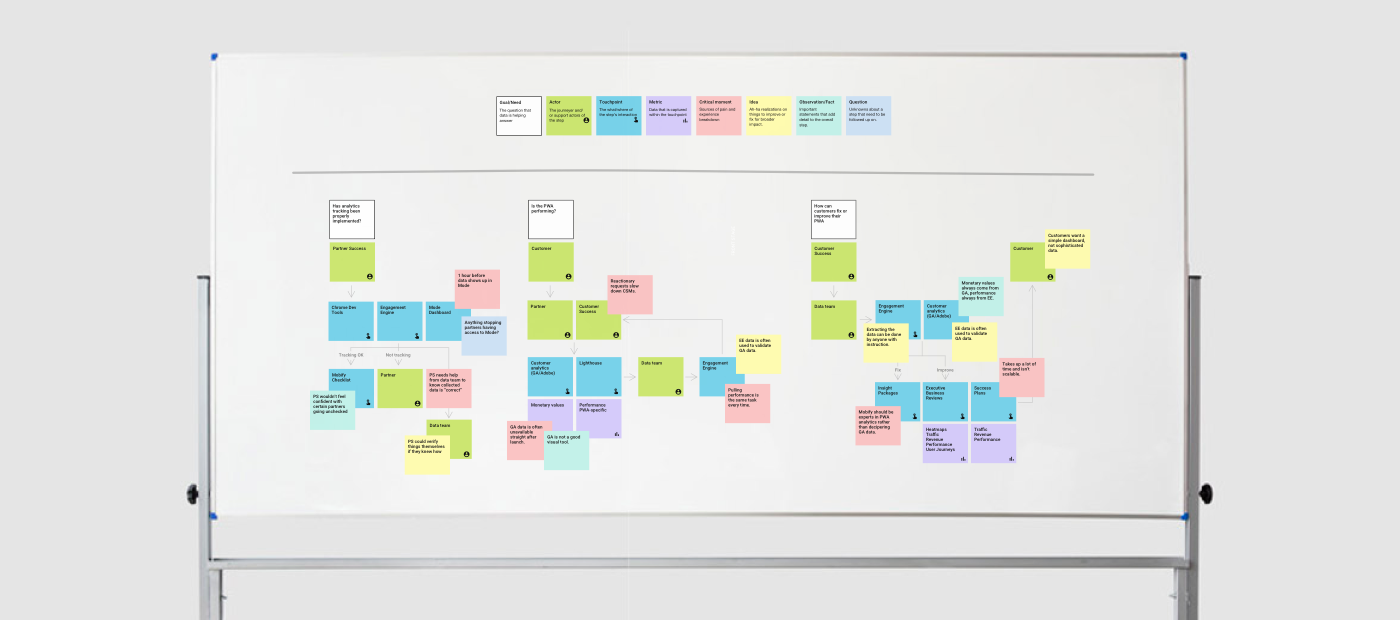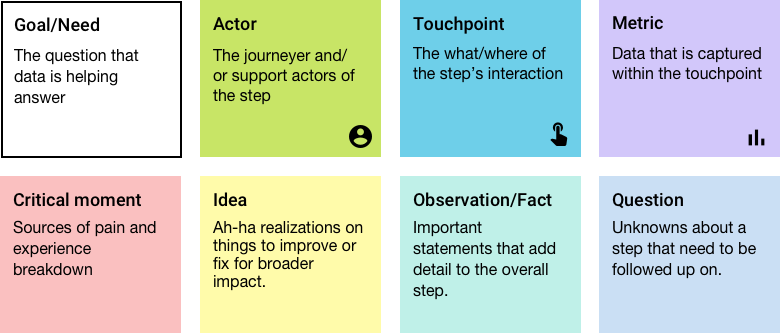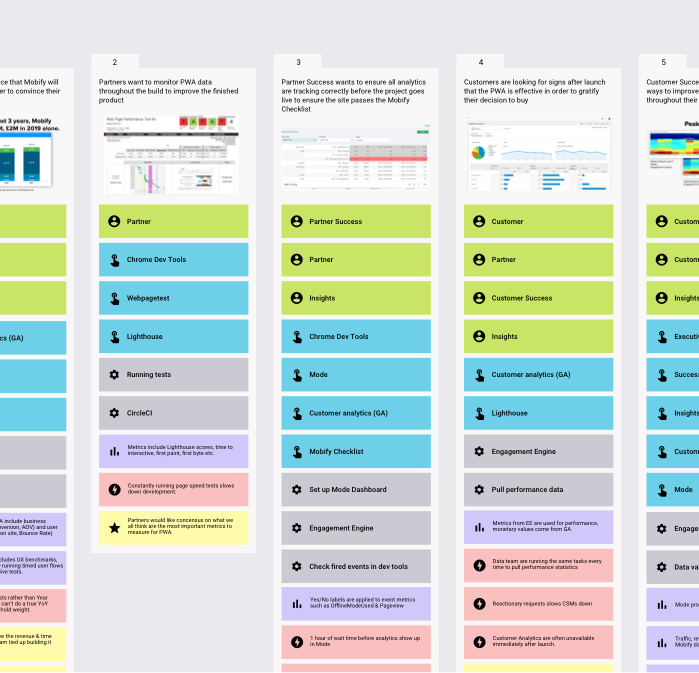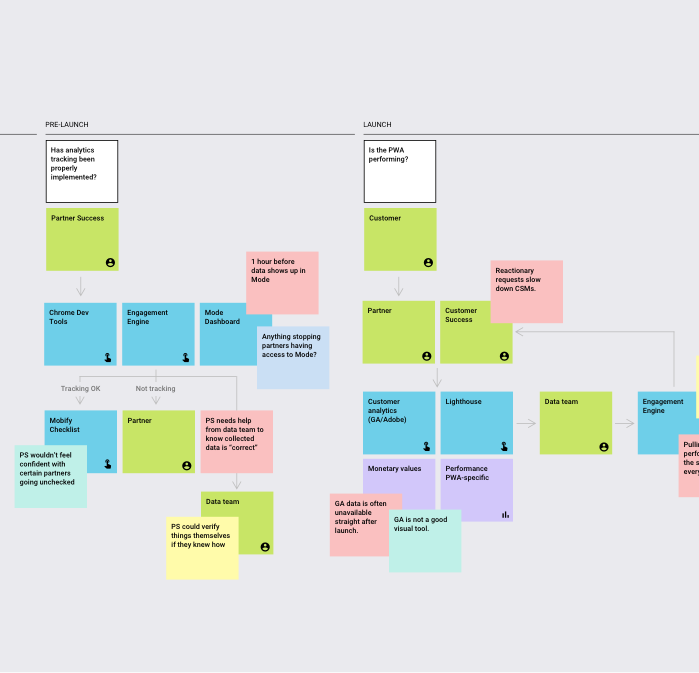Data as a Service
Using service design to identify friction and areas of improvement within the Mobify data team’s processes, touchpoints & human interactions.
SERVICE DESIGN • USER RESEARCH

THE PROBLEM
The are many ways in which Mobify shares data with their customers, partners and between departments, but no coherent process or structure to this service. If Mobify’s data team were able to find the friction points it would allow them to streamline the process and free up time to expand and improve the data offering.

A cross section of the final Service Blueprint identifying issues and critical moments.
RESEARCH
Interviewing the actors
‘Jobs-to-be-done’ style interviews were conducted with anyone involved with data at Mobify. A wide range of ‘actors’ was required to encompass the entire service – this included the data team themselves as well as customers, partners and sales.

Key quotes extracted from the interview process.
By transcribing all the interviews I was then able to pick out the key insights and begin to organize them into a list of Actors, Goals, Touchpoints and Critical Moments.

Insights from the interviews were organized into groups.
DEFINE
Mapping the Service
Key insights from the research phase lead to the realization of 5 key goals within the service. I then was able to begin mapping out all the different actors, touchpoints, and areas of friction within the current process.


Starting on the whiteboard, I listing the actors, tools and touchpoints of 5 key scenarios.
Next step was to map out the flow of data across multiple stages of a customer’s lifespan at Mobify in the form of a Service Blueprint. This makes it easier to identify where the friction points are occurring and for what reason.


Each element in the scenario is then organized into a flow diagram, or Service Blueprint.
ANALYSIS
Key areas for improvement
Using the Service Blueprint I was able to directly call out where the critical moments and unknowns identified in the research interviews, were occurring.

Insights from the interviews were organized into groups.
This blueprint would then act as a valuable tool in helping stakeholders understand a long and complicated process, and make decisions on where improvements should be made.

